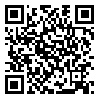Volume 6, Issue 1 (Continuously Updated 2023)
Func Disabil J 2023, 6(1): 0-0 |
Back to browse issues page
Download citation:
BibTeX | RIS | EndNote | Medlars | ProCite | Reference Manager | RefWorks
Send citation to:



BibTeX | RIS | EndNote | Medlars | ProCite | Reference Manager | RefWorks
Send citation to:
Shahbazi M, Karamali Esmaeili S. Application of the Model of Human Occupation (MOHO) in Psychosocial Needs of Adolescents With Type 1 Diabetes: A Case Study. Func Disabil J 2023; 6 (1) : 274.1
URL: http://fdj.iums.ac.ir/article-1-235-en.html
URL: http://fdj.iums.ac.ir/article-1-235-en.html
1- Department of Occupational Therapy, Faculty of Rehabilitation Sciences, Iran University of Medical Sciences, Tehran, Iran.
2- Department of Occupational Therapy, Faculty of Rehabilitation Sciences, Iran University of Medical Sciences, Tehran, Iran. ,esmaeili.s@iums.ac.ir
2- Department of Occupational Therapy, Faculty of Rehabilitation Sciences, Iran University of Medical Sciences, Tehran, Iran. ,
Abstract: (863 Views)
Background and Objectives: Using the model in the clinical reasoning of occupational therapy practitioners create a mental framework and the ability to organize the variables involved in the rehabilitation process. The most comprehensive occupational therapy model, the Model of Human Occupation (MOHO), is based on open systems theory. This model can be widely used in rehabilitation and even education. However, several sources indicate that it is used in pediatrics. So, this study aimed to investigate the application of MOHO in an adolescent with type 1 diabetes.
Case Presentation: The participant was assessed and treated at home by an occupational therapist based on MOHO principles. MOHO analyzes the transaction among the individual's internal factors (volition, habituation, and performance capacities), the activity, and the environmental conditions.
Discussion: Since in adolescents with type 1 diabetes, volition, habituation, and performance capacities are affected by disability, designing and structuring goals and treatment based on MOHO will help occupational therapists perform more effectively, however, further studies with more methodological rigor are needed on this topic.
Case Presentation: The participant was assessed and treated at home by an occupational therapist based on MOHO principles. MOHO analyzes the transaction among the individual's internal factors (volition, habituation, and performance capacities), the activity, and the environmental conditions.
Discussion: Since in adolescents with type 1 diabetes, volition, habituation, and performance capacities are affected by disability, designing and structuring goals and treatment based on MOHO will help occupational therapists perform more effectively, however, further studies with more methodological rigor are needed on this topic.
Article number: 274.1
Type of Study: Case Study |
Subject:
Occupational Therapy
Received: 2023/11/28 | Accepted: 2023/12/30 | Published: 2023/02/7
Received: 2023/11/28 | Accepted: 2023/12/30 | Published: 2023/02/7








